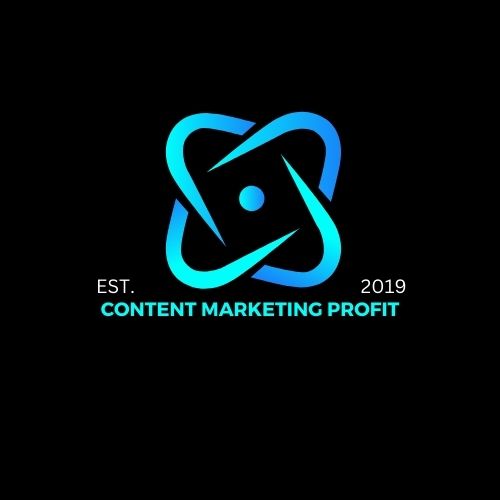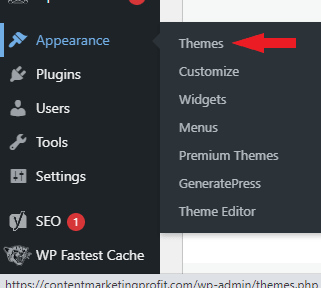Before you read this comprehensive post on how to start a lifestyle blog, I want us to answer a very important question that most bloggers about starting a blog have been dodging.
Should you start a lifestyle blog?
There is no simple answer for this because it depends on who you are and where you presently are in your life.
If you are mercantile-oriented with no wealthy background or not already doing well in life, starting a lifestyle blog may not be the right thing for you to do.
This is because unlike several other niches where you can simply conduct keyword research and see beforehand if your blog has potentials, lifestyle blogging is a bit more complex and has little room for SEO.
And there is no better way to make you understand that than by taking a critical look at some of the biggest lifestyle bloggers in the world today.
Let’s take a look at some of these biggest lifestyle bloggers today and what they do, and then dissect them to see what it means for you.
Lifestyle blog examples

As you can see in the image above, Barefoot Blonde started as a place where she shared her hairstyle and daily outfits.
What kind of a person shares her hairstyles and daily outfits on a blog? The one who has enough to make good hairstyles and enough good outfits to get people talking.
I do not know when and where she started her blog, but this About story offers a glimpse of an insight into how she must have got her first audience: people who were already following her lifestyle posts on social media.
Or do you think a lot of people actually wake up one morning and start typing “Barefoot Blonde” out of nowhere?
The fact that she isn’t at the lowest stratum of society must have helped her to leapfrog her way into the blogging world.
But if this reality does not stand in your way, here is a lesson you can learn from her as a lifestyle blogger: uniqueness.
If you want to start a lifestyle blog, then there ought to be something unique about you or about what you do. In the case of Barefoot Blonde, she has unique hair.
The Pioneer Woman was started by Anne Marie Drummond in late 2006. Nothing of where she got her audience from is known to any of us who came more than half-a-decade later, but by 2007, according to Wikipedia, The Pioneer Woman was already popular enough that Anne has started receiving awards from her blog.
But what transpired should not be too hard to see for anyone that understands the dynamic of the Internet today. In 2006, the Internet is still in its developing stage, the space was not as crowded, and the culture is not as mature as it is today.
Anyone that can set up a proper blog and put a few words together has an audience waiting for them. SEO was not as complex either. It wasn’t even particularly a thing. Now, imagine someone who delivers something of specific value and delivers it as good as Anne does?
It’s not so hard to see why people swarmed around her blog. And before the Internet became the cutthroat car race that is it today, The pioneer woman already has a loyal fan base.
But even with her, the lesson should not be lost on you: Niche down and do something really well.
Joanna Goddard came to start her Cup of Joe after establishing a reputation as an editor and journalist in some well-known magazines.
It’s not hard if you are a beloved editor of a popular magazine to call people’s attention to your personal blog. And what started as a weekend side hobby soon became a full job where she had employees.
The rest, as they say, is history.
If you have made up your mind to still start a lifestyle blog, then there is something to learn from her to: use your network and your former fame to get attention.
Well, I believe the lesson has been learned. This does not mean all of these guys didn’t work hard to get to where the are today, but they had something they leveraged that made the journey easier for them.
Now, if you know you have what it takes, let’s take on the technical details of how to start a lifestyle blog. If you decide not to go on, you can decide to read my post on how to start a small business website.
Determine your niche
As you can see, everyone we mentioned above has a dedicated niche, something that they do and will not mix with any other thing.
Starting a lifestyle blog does not mean you can blog on travels, foods, restaurants, fashions, etc., at the same time.
Success in this business has a lot to do with niching down. If you are a fashion lifestyle blogger, then you can’t be a food blogger. You must choose one.
As you have developed the interest and thought of starting a lifestyle blog, then this must be your starting point.
Go on and look into what interests you the most and see whether your audience is big enough in that area to make your effort meaningful. As you will see when we discuss monetization, and you will learn that without a sizable audience, it’s hard for a blogger to make anything.
And for your information, a sizable audience may mean 1,000 readers somewhere and mean 300 readers somewhere else. But you will learn more about that later in this blog post.
How to set up your lifestyle blog
Choose a domain name
DISCLOSURE: Some of the links below are affiliate links. At no additional cost to you, I will earn a commission if you click through and make a purchase.
We should not spend too much time on how to choose a domain name.
Choose a name that catches your fancy. So long as it follows some of the rules I’m about to list below, you can do no wrong.
- Make it short and memorable. A good domain name is one that people can easily remember, and if you make it too long, it may be hard to type it. The "keep it short and memorable" rule does nothing more than preventing you from stressing or confusing your site users.
- Dot-com is always better. As I show you how to buy a domain name below, you might find that the domain name you have in mind has already been chosen by someone else. Domain registrars will always show you arrays of options which may include .net, .org, etc. It’s better you keep tweaking that name until you find one with dot-com that’s not already taken. Using .net or .org is not inherently bad. It’s just not as memory friendly as .com.
- It’s best to buy a domain name from the same company you want to host on as this will save you the stress of having to manually point your domain name to a web hosting platform. As you read on, I will give you an important tip when we get to the hosting section.
Those are the things to consider before you go on to purchase a domain name. Now we can deal with the technical aspect.
If you are reading this, it’s probably because you have yet to set up your blog. Allow me to take you through the easiest way of doing this by purchasing your domain name and web hosting at the same place, and also save yourself the first year money on purchasing a domain name.
Host your blog
When it comes to hosting your blog, I have only one recommendation: Bluehost.
It’s a service that I have used over and over again. And I was lucky to come across them since when I knew nothing about setting up a blog. Why? They have the best customer service you will find anywhere in the world.
Even if you can’t write a single line of code, Bluehost customer care representatives are available 24/7. I know because I’ve had problems several times with my blog in the past, and I’ve reached out to them each time.
Hosting is a kind of repository of information where your blog and the information on it will be housed.
A combination of a domain name, hosting, and content is what is referred to as a blog or a site.
There are endless numbers of blogging platforms on the web, but WordPress (WordPres.org) is the most popular, as opposed to wordpress.com which is a free hosting site with tightly limited options to customize and little to no room for monetization.
Since it’s a must for a lifestyle blog to be standard and colorful, I would not bother telling you about the rest. Stick with WordPress because that’s what the most successful blogging sites on the web use.
There are four types of hosting: shared hosting, VPS hosting, dedicated hosting, and cloud hosting. There is no need to bore you with the specifics on those ones, too. I will only be covering the one that’s relevant to you in this post.
Now, to host your blog, do the following:
Go to bluehost.com.
Click on "Get started."
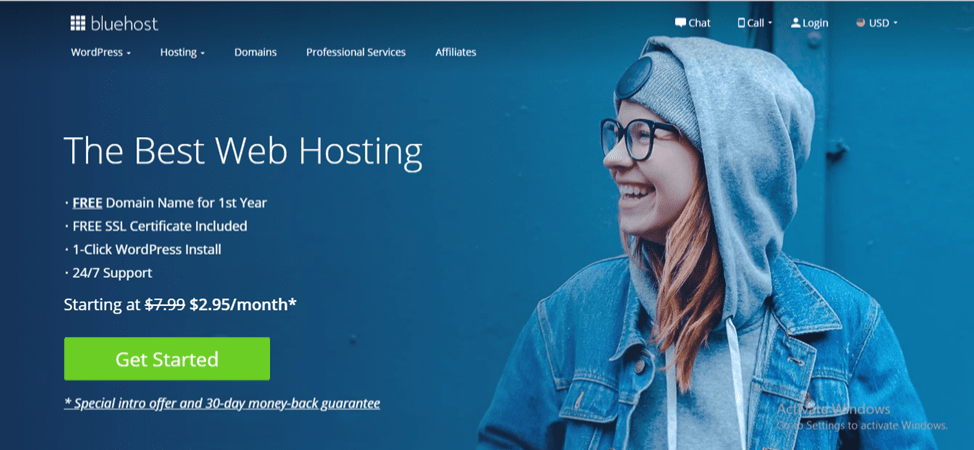
The next thing is to choose a plan that works for you. There are four options, choose one depending on your goal and budget.
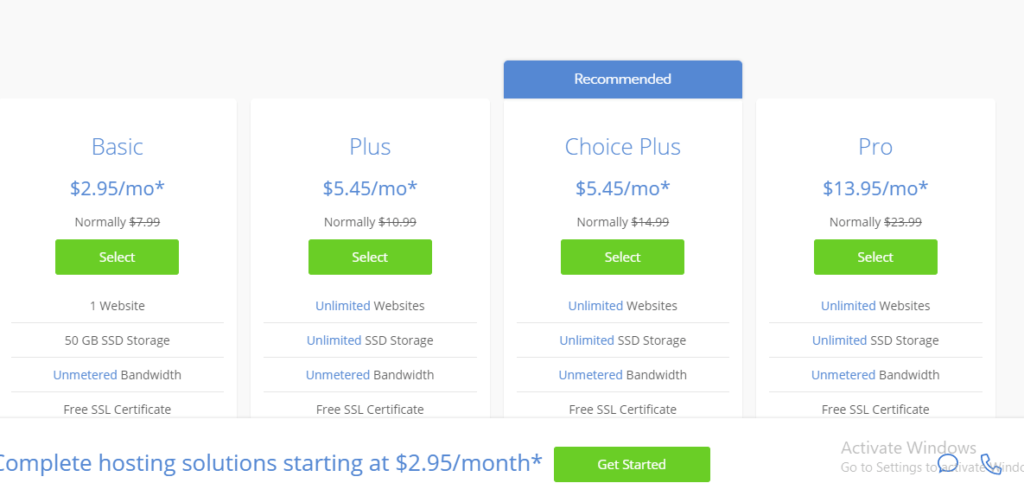
Next, go on and type in your domain name. And if you don't already have one, insert your preferred domain name to see if it is available. You will see a space for both.
When you are done with that, click on Next and move to the payment stage to proceed to choose a payment plan.
Then proceed to payment information.
Insert your payment method and make payment.
You will have to wait for a few minutes or a few hours for them to get your blog up. But it will not take long. It usually takes less than 30 minutes but never more than 24 hours.
If you are unsure of anything, do not worry, Bluehost has one of the best customer support in the world. Their live chat is immediately available on their website and their technical help teams are superb.
Congrats, your blog is up. Now, there are few more things to do. Let’s quickly go over them.
To access your blog, download WordPress from wordpress.org and log in with the password you developed while getting your hosting.
Choose a theme
I'm not sure if you have been paying attention. But a lifestyle blog in this generation is a battle for visual, which requires you to get a very fine background for your site.
In any case, the requirement isn't much, get a crisp background that allows the visuals in your content to stand out.
If you are starting with the basic, here is what you need to do.
Go to your WordPress dashboard... Go to Appearance, then Theme.
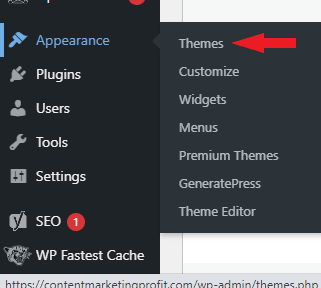

That's how you can get a new theme and add it to your site.
After installing and activating a new theme, you can start customizing them to the best of your interest.
Again, there is nothing hard about this. As soon as you click on customize, you will see things you can change and you can do anything you want with them and monitor them in real-time.
On a personal note, I will recommend you look for a minimalist theme. A minimalist theme is great for lifestyle blog, so I will advise you try it. Typically, a lifestyle blog will have photos and videos, lots of them.
Start publishing content
Now that your website is up, it's time for content publication.
Before you start a lifestyle blog, I believe you are already a writer or have the flair for writing. So, writing something readable and digestible should not be a problem for you.
But now you are online. The culture is a little different here and it's becoming mature.
The tone should be simple, casual, and fun.
No official jargon, no complex expression, no long sentences, no big word. Just write like you would if you were talking to your bestie on, say, WhatsApp (Keep the confidential out).
If you have a good sense of humor, that would be an additional advantage.
All these to go along with your visual content. Have lots of fun.
Drive traffic to your blog
On the Internet, attention is the commodity. A blog is nothing without its readers. If you are ever going to succeed with your blog, then it's important to find a way to start getting traffic to it.
To do this, there are many ways. see some of them below:
Search Engine Optimization (SEO)
SEO is the best thing since sliced bread. It's why someone like me who do not like running ads have a business.
SEO is the practice of getting users to your site through organic search.
But if one day you are ready to learn more about getting traffic to your site, you will find a section dedicated to that under my comprehensive on starting a blog here.
Monetize your blog
There are many ways to monetize your lifestyle blog. Let's look at some of them below.
Affiliate marketing
As a lifestyle blogger, you have access to more than enough products to promote.
And among the many sources of making money for a lifestyle blog, affiliate marketing is quite a huge opportunity.
What does affiliate marketing mean, by the way?
It simply means taking someone else’s product, recommending it to potential buyers, and getting a commission from the seller when the people you recommend to make a purchase.
To know who is referring who, affiliate owners will give you a unique tracking code that you can insert as a link on your website when recommending a product.
Once anyone clicks on it, a cookie will be saved on their device that automatically tells the seller that you are the referrer if they eventually make a purchase from them.
To get affiliate marketing, you will have to join affiliate networks or request companies that manage their own affiliate program to approve you as an affiliate.
Some of the affiliate networks you can join includes:
- Amazon associates
- eBay
- Clickbank
- Shareasale
These affiliate programs manage affiliate for a host of other brands. But some brands control their own affiliate program in-house, so you can go to their website to learn more.
Ad placement
Once your website has begun to get traffic, you can request to join advertising networks to place ads on your website or you can take ads directly from businesses by yourself and post them on your platform.
There are many ways ad placement work, but the most popular one is, as soon as people click on the ad they see on your site, you earn a commission.
Some only give you commission once they pay. In short, it varies. So, you should check the one you are joining very well, first.
Sponsored post
A sponsored post is when some other blogger or company pays you to publish their blog post on your site for your audience to see.
Personally, I have never tried it out, but it’s highly recommended by other bloggers, so it’s definitely a legitimate way of making money as a blogger.
Offer freelance services
If you have succeeded in driving traffic to your site, it means you’ve actually acquired some new skills.
For example, you would have become a better writer in your niche by writing a lot of great posts on that topic.
Or you could have learned more about driving traffic while you were doing your own.
Blogging also makes you better at what you do because a lot of research is needed to be able to offer expert opinions on any blogging subject.
So, in any of these fields, you can actually use your blog site to position yourself as a freelancer or even a consultant.
This will fetch you extra income.
That’s it on how to start a lifestyle blog and make money. If you have any questions, drop them in the comment section below.
